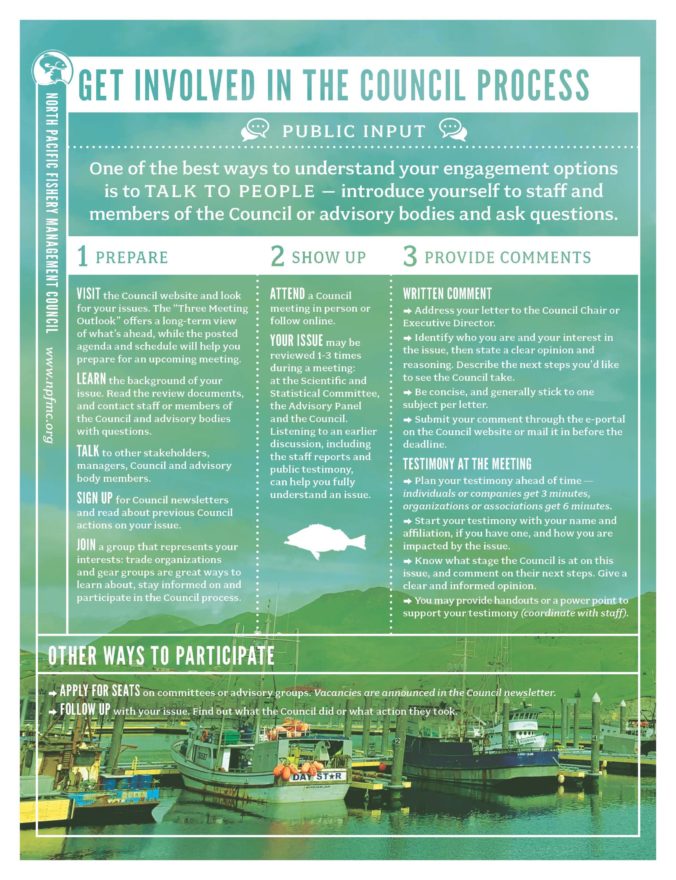How To Participate in NPFMC Council Meetings
One of the keys to successful fishery management is incorporating diverse views into decision-making through a transparent public process. The Council system was designed so that fisheries management decisions were made at the regional level to allow input from affected stakeholders.
Attend Council Meetings
Council meetings are open, and public testimony – both written and oral – is taken on each and every issue prior to deliberations and final decisions. Public comments are also taken at all Advisory Panel and Scientific and Statistical Committee meetings. Written comments can be submitted up through 12:00 noon on Friday prior to the Council meeting week. The preferred method is through comment links on the Agenda. However, if necessary they can be mailed to the Council office at 605 West 4th Ave, #306, Anchorage, AK 99501, or faxed to 907-271-2817.
Discuss Issues
If you have an issue you want to be discussed at a Council meeting, it would be best to familiarize yourself with the members of the process; both the Council staff and the Council members. There is historical information throughout this site which would be beneficial, and a great resource are the newsletters which are a summary of each meeting and can get you up to speed on what actions have already been taken. While there is not a formal “call for proposals,” you are welcome to draft a letter to the Council which will be put in the Council notebooks. Most likely, if it’s a new issue, it will be addressed at the end of the meeting under an agenda item called “Staff Tasking.” The public will be given a chance to comment, and this would be a good time to address the issue during the meeting.
How Council Decisions are Made
Each Council decision is made by a recorded vote in the public forum after public comment. Final decisions then go to NMFS for a second review, public comment, and final approval. Decisions must conform with the Magnuson-Stevens Act, the National Environmental Policy Act, Endangered Species Act, Marine Mammal Protection Act, and other applicable law including several executive orders.
Regulatory changes may take up to a year or longer to implement, particularly if complex or contentious, but the Council makes every attempt in being open and transparent throughout the process.




